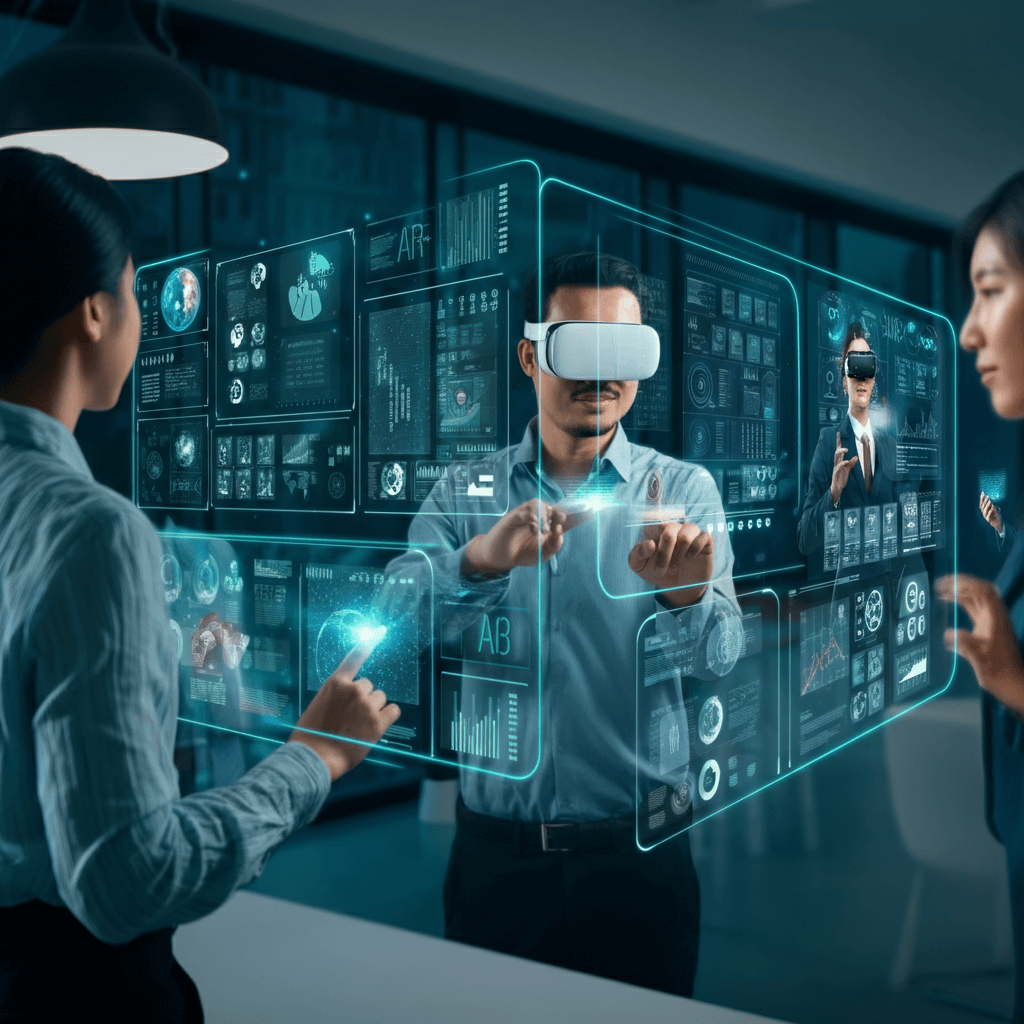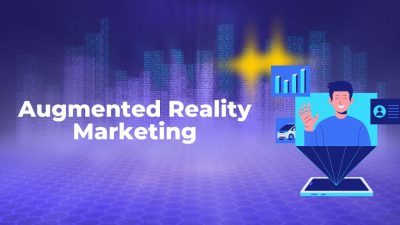Augmented Reality (AR) and Virtual Reality (VR) have revolutionized the way businesses interact with their customers. These advanced technologies aren’t just for gaming anymore; they’re transforming marketing, offering immersive and engaging experiences that customers can’t forget. For marketing professionals, business owners, and tech enthusiasts, understanding the potential of AR and VR can unlock endless possibilities.
This blog explores how AR and VR are reshaping marketing strategies, dives into their benefits, and provides guidance on choosing the right technology for your brand. By the end, you’ll be equipped with insights to take your marketing strategy to the next level with these innovative tools.
Understanding Augmented Reality (AR) Marketing

What is AR Marketing?
Augmented Reality enhances the real world by overlaying digital elements such as images, sounds, or interactive data through devices like smartphones or AR glasses. AR marketing uses this technology to create interactive and personalized campaigns that captivate audiences.
Real-world Examples of AR Marketing:
- IKEA Place App: IKEA uses AR to allow customers to virtually place furniture in their living spaces, giving them confidence in their purchase decisions.
- Sephora Virtual Artist: Sephora’s AR app lets customers try on makeup virtually, seeing how products look before buying.
- Pepsi Max’s AR Bus Shelter Campaign: This innovative campaign turned a regular bus stop into a window to an exciting AR world, featuring alien invasions and tigers roaming the streets.
Benefits of AR Marketing:
- Enhanced Customer Engagement: AR grabs attention by adding an element of surprise and interaction.
- Immersive Brand Experiences: It creates meaningful connections between consumers and brands by making marketing campaigns memorable.
Exploring Virtual Reality (VR) Marketing
What is VR Marketing?
Virtual Reality immerses users in fully digital environments through VR headsets. This technology transports consumers into entirely new worlds, enabling deeper brand storytelling and more engaging experiences.
Real-world Examples of VR Marketing:
- Marriott’s Teleporter Booth: Marriott used VR to take customers on a virtual trip to stunning destinations around the world, highlighting the wonders of travel with their hotels.
- Toms Shoes VR Experience: Toms created a VR experience to show customers where their shoes’ profits go, emotionally connecting them to their “One for One” giving campaign.
- Audi VR Showrooms: Audi allows customers to explore and customize their future vehicles in a VR environment, enhancing the car-buying experience.
Benefits of VR Marketing:
- Deeper Brand Storytelling: VR allows brands to tell their stories in dynamic and immersive ways.
- Virtual Product Experiences: Customers can virtually experience or test products before purchasing, building trust and increasing conversion rates.
AR vs. VR in Marketing: Key Differences
While AR enhances the real world, VR creates an entirely new one. Both technologies have unique benefits, and choosing the right one depends on your marketing goals.
- Use AR when you want to create interactive experiences within real-world settings, like product visualizations or engaging social media filters.
- Use VR for fully immersive storytelling that transports users to virtual environments, perfect for showcasing high-value or emotionally resonant products.
The Many Benefits of AR and VR Marketing
1. Enhanced Customer Engagement
Both AR and VR captivate audiences by adding interactivity and immersion, offering something far beyond traditional advertising.
2. Immersive Brand Experiences
Marketers can create experiences where customers are part of the story, making the campaigns unforgettable.
3. Improved Conversion Rates
Allowing customers to virtually try or experience products reduces hesitation and increases purchase intent.
4. Boosted Brand Awareness
Using cutting-edge technology helps brands stand out and positions them as innovative leaders in their industries.
Successful AR and VR Marketing Campaigns

- Nike’s AR Shopping Experience:
Nike combined AR with their SNKRS app to launch exclusive sneakers. Customers used AR features to uncover virtual “hidden” shoes that they could purchase only through the app.
- Coca-Cola’s VR Polar Bear Experience:
Coca-Cola created a VR experience showing endearing polar bears navigating festive scenes, emphasizing their brand’s holiday spirit.
- Burger King’s “Burn That Ad” AR Campaign:
Burger King used AR to encourage customers to “burn” rival brands’ ads using their app, offering flame-grilled burgers as rewards.
Challenges and Considerations for AR and VR Marketing
While the potential of AR and VR is vast, implementation doesn’t come without challenges.
- Cost: VR content creation and AR integrations can be expensive. Start with campaigns that fit your budget.
- Accessibility: VR requires dedicated equipment like headsets, potentially limiting reach.
- Technical Expertise: Implementing AR and VR requires skilled teams, and collaborating with professionals is often necessary.
Getting Started with AR and VR Marketing
If you’re ready to explore AR and VR marketing, start small.
- Identify Your Goals: Do you want to increase engagement or tell a compelling story?
- Understand Your Audience: Are they tech-savvy? Will they have access to VR headsets?
- Choose the Right Tools: Experiment with platforms like Spark AR for AR campaigns or Oculus for VR experiences.
- Collaborate with Experts: Many agencies specialize in creating AR/VR campaigns. Collaborating can ensure a professional outcome.
The Future of AR and VR Marketing
As technology advances, AR and VR will continue to reshape marketing. Here are some exciting trends to watch for:
- Web-based AR experiences that eliminate the need for app downloads, making campaigns more accessible.
- Haptic VR technology allows users to feel digital objects.
- AI-powered AR and VR can deliver hyper-personalized experiences to users in real time.
Take Marketing into the Future
AR and VR represent the future of marketing, offering unparalleled ways to engage audiences, build emotional connections, and stand out in competitive landscapes. Whether you’re a marketer, a business owner, or simply enthusiastic about tech, exploring augmented and virtual reality could be the key to unlocking new opportunities for growth.
Start transforming your marketing approach today and position your brand as an innovator in the digital age.





